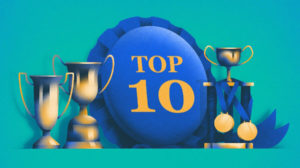TL;DR: Early-stage rounds into SaaS startups didn’t fall apart last year even as late-stage liquidity disappointed.
2017 has brought much-needed liquidity to the software as a service (SaaS) market. That fact is helping melt quite a lot of illiquid capital and value that wasn’t previously accessible to investors, employees, and executives.
But on the other end of the maturity spectrum, how are early-stage SaaS startups performing after negative indicators were flagged by industry observers last year?
To get a handle on what is going on with younger software startups, let’s check in on Series A and B SaaS companies’ fundraising performance in 2016 and, to date, in 2017.
Software Startups
SaaS companies, firms that sell software products on a recurring basis, are an important part of the modern startup landscape. SaaS is the standard software (non-gaming) business model. New players and giants alike have bowed to subscription packages over the discrete sale of software.
Despite that transition taking the entire industry in a new direction, not all signals were positive last year.
In mid-2016, Redpoint’s Tomasz Tunguz noted that software startup “formation” was in rapid decline. Tunguz’s warning signal, to some extent, was perhaps surprising given how prevalent SaaS, the business model, had become. However, other analysis into the SaaS market published last year noted that intra-SaaS costs were rising while companies focused on increasingly narrow product niches. Given those points, it became less surprising that SaaS wasn’t as in vogue as before. And by reading those points, it was easy to presume that last year’s Series A and B rounds for SaaS companies would be light compared to the year-prior. However, to see if venture dynamics in SaaS changed during 2016, we cut up some data.
Early Stage: Steady
Instead of finding 2016’s SaaS fundraising to be low for early-ish stage startups, we discovered the market has been tame.
To better understand how the SaaS market got along last year, I asked Crunchbase News’ Jason Rowley to pull all funding data for Series A and B rounds in the database tagged as “SaaS” that took place from the start of 2015 through today (the last week of the first quarter).
The resulting charts have a lot of quarterly noise to them, but there is an interesting result that we can lean on to clean out the static.
For your reference, here are the SaaS-denoted A rounds on a quarterly basis back to the first quarter of 2015:

And the same chart, this time looking at Series B rounds:
 Notably, the 2015 and 2016 aggregate results for number of rounds among Series A are only off around three percent of each other, and the same year-over-year comparison for Series B rounds gives us an under four percent differential. Series A and B rounds tagged “SaaS” were essentially flat in 2016 compared to 2015. For the data-focused among you, A rounds ticked up slightly while B rounds fell slightly.
Notably, the 2015 and 2016 aggregate results for number of rounds among Series A are only off around three percent of each other, and the same year-over-year comparison for Series B rounds gives us an under four percent differential. Series A and B rounds tagged “SaaS” were essentially flat in 2016 compared to 2015. For the data-focused among you, A rounds ticked up slightly while B rounds fell slightly.
The New News
When we take a look at the first quarter of 2017, comparative results get a bit more interesting.
The data used in the above charts is uncorrected for time. We didn’t amend the first quarter (2017) data to take into account that its time period is incomplete, or that some already-occurred Series A and B rounds don’t become known until after the quarter is complete.
Given those caveats, the first quarter is quite light on Series A rounds for SaaS companies, and it is on pace for Series B rounds when compared to the preceding two years. That could easily balance out during the rest of the year, but it’s worth writing down where we stand today.
(You could, for example, note that Series A rounds were strong in the fourth quarter, making lower-than-pace Series A rounds in the first quarter reasonable; in reverse, the same point holds for Series B rounds.)
Not So Slow
Before we got the data for the two years, I would have bet you a few lunches that 2016 was worse for SaaS A and B rounds than 2015. And worse enough I would have wagered that the data would be clear.
Jokes about anti-prescience aside, this means that the earlier-stage SaaS market chugged along even while its later stages’ exit pace disappointed. In simpler terms, investors earlier in the value chain kept funding companies at a similar pace (in round, not dollar terms) in 2016 when compared to 2015. That shows either a firm confidence that the late-stage and public markets would figure out SaaS, or a blind willingness to follow a plan that was supposed to work.
Regardless, SaaS multiples are back up, enterprise IPOs could have a strong year, and early stage didn’t have a bad last year.
The current tech cycle is hardly over.


Stay up to date with recent funding rounds, acquisitions, and more with the Crunchbase Daily.











67.1K Followers